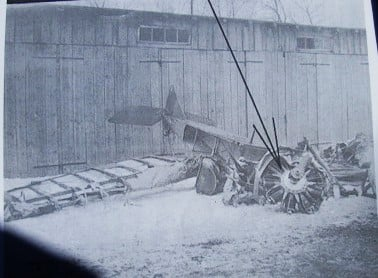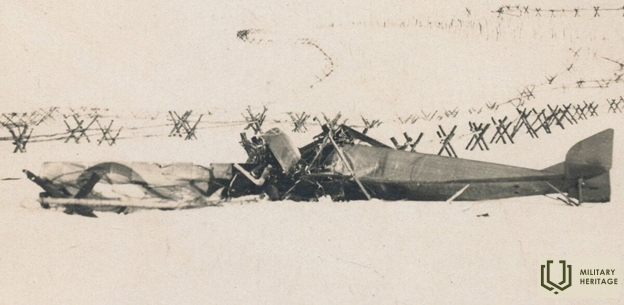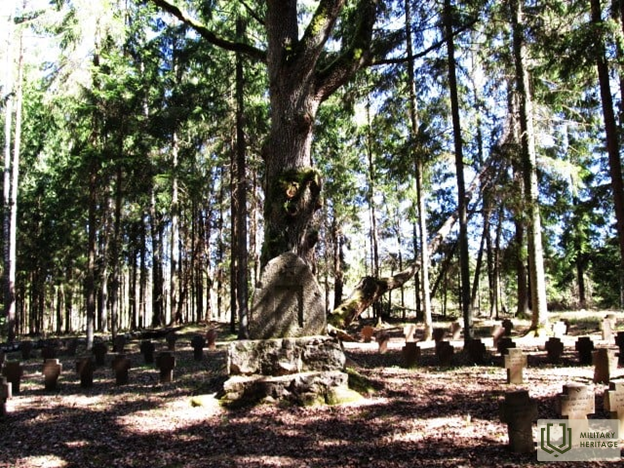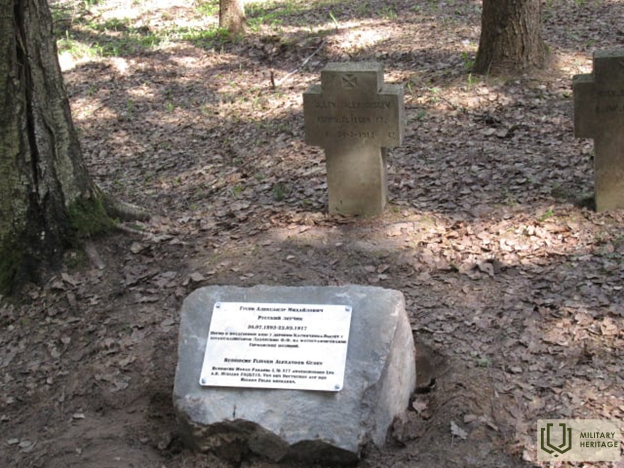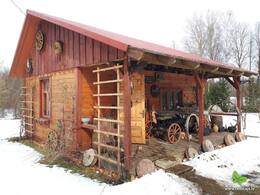About the grave of the downed pilot
In the First World War, new technical means were used on a massive scale (machine guns, poison gas, tanks, submarines, artillery barrage tactics, flamethrowers, combat aircraft), which reached an unprecedented level of human casualties. It is said that the last knightly battles were fought in the air, because mutual respect and unwritten rules reigned among the pilots. At the beginning of the war, when the planes were not yet equipped with weapons and flew on observation missions, the pilots of the opposing sides even greeted each other in the air. Later, however, the opposing side would inform the opposing side about the downed or captured enemy pilots by flying to the enemy airfield and dropping a note in a sandbag or even a report from the captured pilots.
During World War I, enemy airfields were avoided, and enemy pilots were buried with military honors. There are also recorded cases of enemy pilots laying a wreath on the day of the burial of a particularly brave or skilled pilot, even if it was an enemy. This practice was common on both the Eastern and Western Fronts. Latvian pilot Rūdolfs Celms has written about several such cases in his book “Tev būs lidot” (published in 2019, published by the Latvian Aviation Museum “Spilve” Society). Such an incident was also recorded on the Daugavpils front, when on March 24, 1917, on the German side in Medumi parish near the village of Papuļi, a Morane-Saulnier L “Parasol” aircraft piloted by Russian army pilot Aleksandr Gusev, which was a widely used biplane in the Russian army, was shot down. Board number No. 301. The pilot was from Odessa, died at the time of the crash, but the observer was only injured, survived and was treated in Kaunas hospital. Pictures of the shot down aircraft have survived. A German pilot dropped a note on the Russian front about the fate of the pilots, while the pilot himself was buried with military honors in a cemetery near the Vilciņi bunker. Since the pilots were with documents, they could be identified unless the plane burned up at the time of the crash, as it often did. Consequently, airmen, unlike other branches of the armed forces, were not usually buried as unknowns and their grave sites are identifiable.
Rudolfs Celms:
Early spring brought interesting changes to the life of the airfield. If enemy pilots land on our side, then can we call it a change? In one case, a pilot from the Teter division shot down a German plane. It was forced to land in the vicinity of Daugavpils. Both pilots were incredibly worried about what had happened and begged the staff officers to allow them to write a few lines to their commander - otherwise he would think that both of them had landed on purpose.
After a long communication with several authorities, such permission was granted. I was invited to the headquarters to translate the letter from the two German pilots. Then my commander put the letter in a long, white bag, took it to Ilūkste and dropped it there.
In another episode, Rūdolfs Celms describes how a German biplane “Albratross” made a forced landing near Līvāni and also reported this incident to the German side:
"I contacted my commander and decided to help the two Fritzes, because the German pilots also behaved chivalrously. They always dropped letters at our airfields if one of ours landed there or was killed. (..) The very next day we flew to one of the nearest German airfields and, having received a shrapnel explosion, threw a sandbag with a letter."
R.Celms, You Will Have to Fly, p. 93.
Photo: from the private collection of Raimonds Stikāns.
Related timeline
Related topics
Related objects
The First World War local history collection in Medumo
Located in Medumu village, Jaunatnes Street 4.
A private collection of historical evidence created by the Stikāns family. A collection of artifacts from the First and Second World Wars has been created, collected mostly from Medumi parish and the surrounding area. Both military heritage items and household items, coins, and photographs can be viewed.
The private collection can be viewed by prior arrangement. Admission is by donation.




